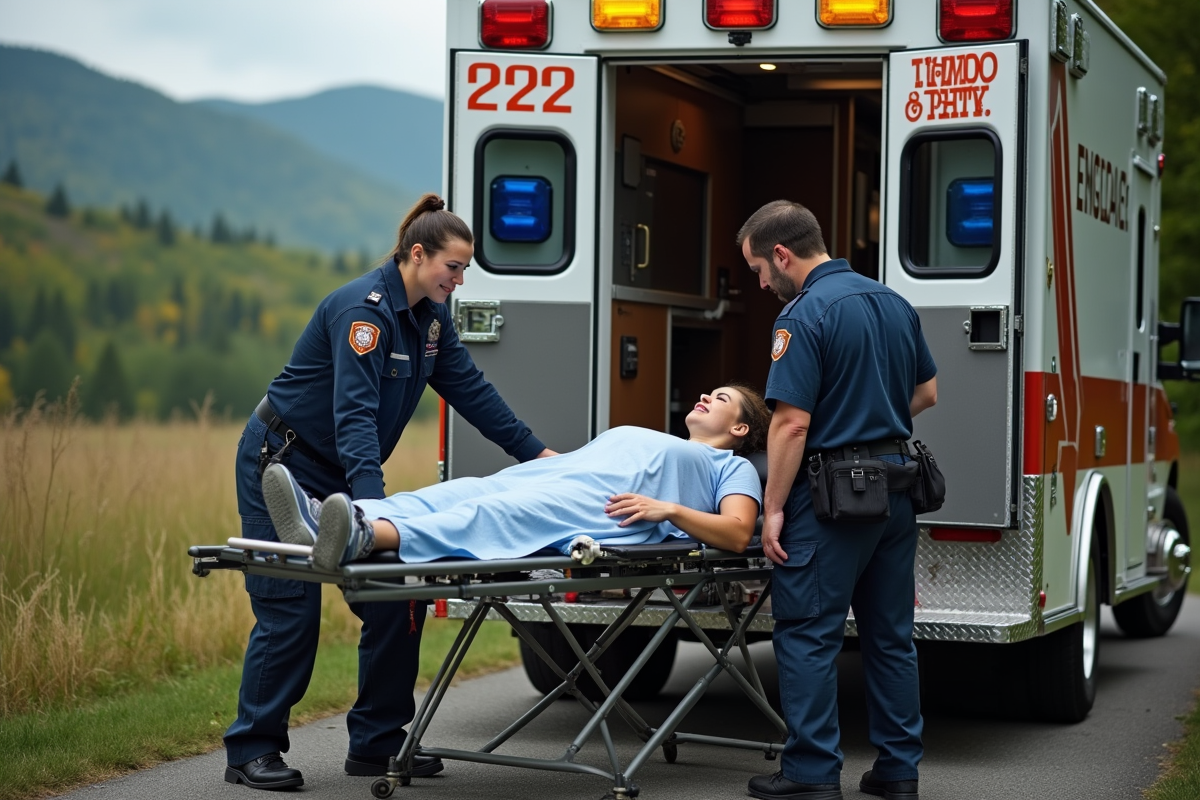
As rural communities continue facing healthcare access challenges, 15 state legislatures have introduced 37 bills in early 2025 targeting emergency medical service improvements and rural hospital sustainability. These proposals represent a coordinated effort to address systemic gaps in medical care accessibility for approximately 60 million Americans living in rural areas.
Revitalizing Emergency Response Systems The legislative package focuses on three primary objectives: mandating life-saving equipment deployment, preventing rural hospital closures, and modernizing ambulance service reimbursement. Indiana's SB0505 exemplifies this approach by authorizing EMS personnel to transport patients to specialized facilities beyond traditional hospitals, while New York's S01989 classifies EMS as essential services eligible for state aid.
Key innovations include Illinois' alternative staffing models in HB1412, which permits part-time EMS workers in communities under 10,000 residents, and Mississippi's HB696 expanding tactical medical capabilities for law enforcement response teams. Several bills like Connecticut's SB00704 address workforce shortages through loan forgiveness programs for rural healthcare professionals.
Geographic Implementation Patterns Northern states appear focused on structural reforms, while Southern legislatures emphasize funding mechanisms:
- Midwest: Indiana leads with 4 bills creating county EMS plans
- Northeast: New York dominates with 5 proposals including Medicaid reimbursement reforms
- South: Mississippi and Oklahoma prioritize ambulance service rate adjustments
- West: Hawaii's SB866 establishes rural health pilot programs
Impact on Vulnerable Populations Analysis shows disproportionate benefits for:
- Older adults needing frequent medical transportation
- Indigenous communities facing hospital closures
- Veterans in remote areas requiring specialized care
- Low-income residents reliant on Medicaid-covered services
Illinois' HB1301 creates a Rural Hospital Task Force specifically charged with preserving access for minority communities. However, Oklahoma's SB892 raises concerns about reduced service competition in its sole-provider ambulance system.
Operational Challenges Implementation hurdles include:
- Upfront AED costs averaging $1,200-$3,000 per device
- Medicaid reimbursement delays documented in Nevada's AB102
- Workforce training requirements for new EMS protocols
- Data collection mandates in Maine's LD245
Financial Considerations The bills propose diverse funding approaches:
| State | Funding Mechanism | Example Bill |
|---|---|---|
| NY | Medicaid rate adjustments | A01928 |
| HI | General fund appropriations | SB866 |
| VA | Motor vehicle registration fees | HB2616 |
Future Outlook Emerging trends suggest states may soon:
- Expand telemedicine integration with EMS systems
- Create public-private partnerships for equipment maintenance
- Implement health outcome metrics for funding allocations
- Develop mobile integrated healthcare programs
While these proposals show bipartisan support, their long-term success will depend on sustained funding and careful monitoring of service distribution equity. The coming year will prove critical as states like Illinois and New York begin implementing their rural healthcare task force recommendations while smaller states pilot innovative staffing models.
Related Bills
An Act to Implement the Recommendations of the Blue Ribbon Commission to Study Emergency Medical Services in the State
Emergency transport to appropriate facility.
Emergency medical services.
Classifies emergency medical services as essential services for the purposes of state aid.
Authorizes emergency medical technicians to administer certain vaccines pursuant to non-patient specific orders and under the authority of an emergency medical services director after receiving appropriate training; authorizes physicians and certified nurse practitioners to prescribe and order a non-patient specific order to an emergency medical technician to administer certain vaccines; provides for the repeal of such provisions upon the expiration thereof.
An Act Requiring Nursing Homes To Have An Automated External Defibrillator On Site.
An Act Requiring Assisted Living Facilities To Have An Automated External Defibrillator Available In A Public Area.
Revises provisions relating to emergency medical services. (BDR 40-345)
EMTs; authorize those with law enforcement agency special teams to perform certain advanced medical procedures.
Emergency medical services.
Related Articles
You might also be interested in these articles
